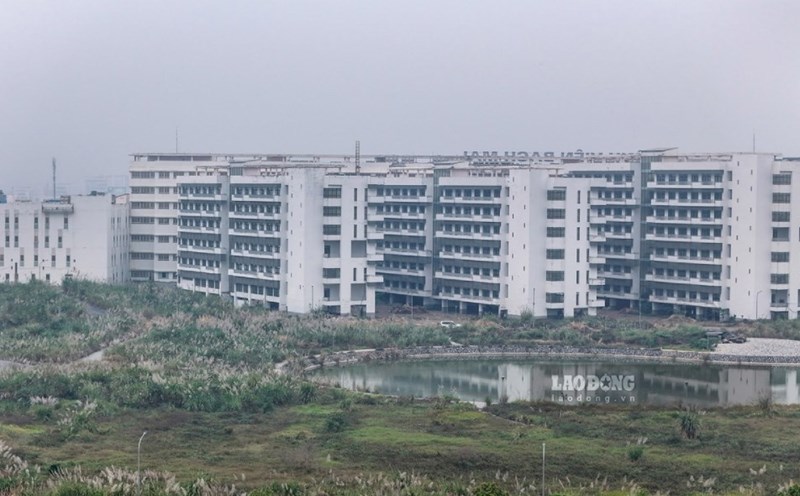Rental prices increase
Research data from the Vietnam Association of Realtors (VARS) shows that by the end of 2024, the average primary price of apartments in Hanoi had reached 70 million VND per square meter, an increase of 35.4% per year, as newly opened projects were all in the high-end and luxury segments, causing the secondary price level to increase sharply.
The price level of apartments is constantly increasing and new levels are being established, causing apartment rental prices to also tend to " scale up", with an average increase of 10 - 20% in 2024.
In the city center, there is almost a "disappearance" of apartments with rental prices under 10 million VND per month, the common rental price of 1-bedroom apartments is from 10 - 15 million VND/month, 2 bedrooms is from 15 - 20 million VND/month. In suburban areas, the average apartment rental price is from 6.5 - 15 million VND/month, an increase from the common rate of 3-8 million VND/month in less than 5 years.
The continuous increase in rental prices has made it difficult for many workers, especially young people with average and low incomes, to maintain their lives in urban areas. When rental costs account for 35 - 50% of income. In addition to other living expenses, young people are almost unable to accumulate.
Many people are no longer able to afford to pay, forced to narrow their living space, seek cheaper options or even leave big cities. The trend of moving to suburban areas is becoming increasingly clear, thanks to rental prices about 20 - 30% lower than in the center. However, moving far away also brings many challenges when the public transport system has not been developed synchronously, travel costs have increased...
Housing support for young people
The Vietnam Real Estate Brokers Association believes that, in addition to continuing to promote the development of the social housing segment, to support young workers, the State needs to soon study and develop long-term rental housing funds at low prices, prioritizing young workers, civil servants, young intellectuals, and workers working in key industries. Encourage investors to participate in building affordable housing through tax incentives, loan support or reduction of land costs. At the same time, it is necessary to promote the development of the public transport system, helping workers easily move from low-cost areas to work centers.
The State can study and apply the dormitory model for urban workers as in Singapore. Accordingly, in Singapore, the Government provides affordable housing for young people, single people and qualified workers through HDB Public Rental Scheme and Build-to-Order (Build-to-Order). Young workers who have just graduated and are unable to buy a house can rent HDB apartments at a price 40-50% lower than the market. When they have enough finances, they can buy a BTO apartment with a subsidy program and a low-interest home loan.
Second is Purpose-Built Dormitories (Specialty dormitories for workers), mainly serving immigrant workers and young workers without stable housing. Each dormitory has a capacity of 1,000 - 25,000 people, managed according to a modern model with clean rooms, guaranteed security, shared living areas, kitchens, bathrooms, and entertainment rooms. The operating system is strict, ensuring hygiene and labor safety standards.
For investors, VARS believes that, to ensure the sustainable development of the real estate market, investors need to research and develop affordable housing products that are more suitable for the needs of the majority of people. Because although the demand for high-end housing is also very large, the main demand and largest proportion in the market is affordable, mid-range housing. The real estate market will be forced to adjust when supply and demand are increasingly shifting, causing purchasing power to decrease. When people who want to buy a house to live without enough financial capacity are also "difficult" investors because the rental rate is low, the value is unlikely to increase sharply in the future.











